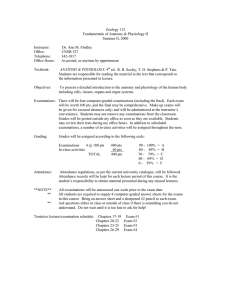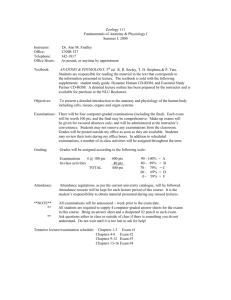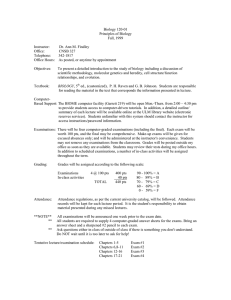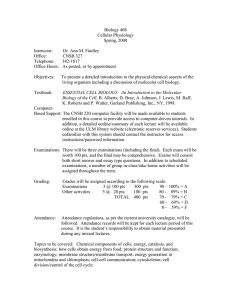Zoology 206 Pathophysiology Spring, 2000
advertisement
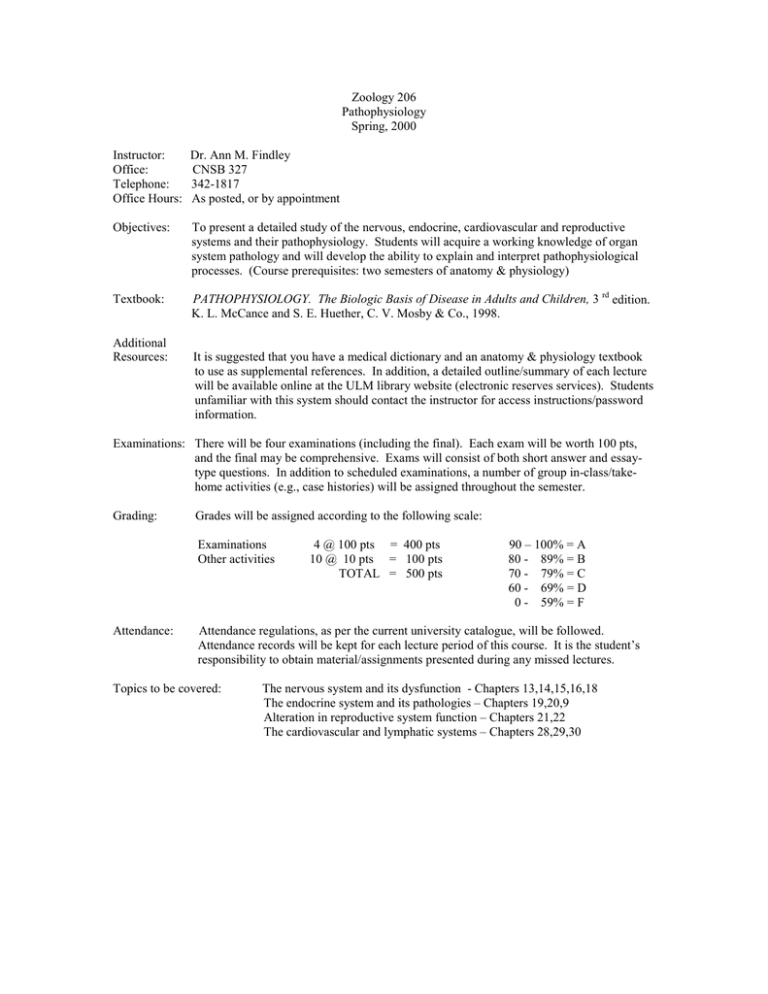
Zoology 206 Pathophysiology Spring, 2000 Instructor: Office: Telephone: Office Hours: Dr. Ann M. Findley CNSB 327 342-1817 As posted, or by appointment Objectives: To present a detailed study of the nervous, endocrine, cardiovascular and reproductive systems and their pathophysiology. Students will acquire a working knowledge of organ system pathology and will develop the ability to explain and interpret pathophysiological processes. (Course prerequisites: two semesters of anatomy & physiology) Textbook: PATHOPHYSIOLOGY. The Biologic Basis of Disease in Adults and Children, 3 rd edition. K. L. McCance and S. E. Huether, C. V. Mosby & Co., 1998. Additional Resources: It is suggested that you have a medical dictionary and an anatomy & physiology textbook to use as supplemental references. In addition, a detailed outline/summary of each lecture will be available online at the ULM library website (electronic reserves services). Students unfamiliar with this system should contact the instructor for access instructions/password information. Examinations: There will be four examinations (including the final). Each exam will be worth 100 pts, and the final may be comprehensive. Exams will consist of both short answer and essaytype questions. In addition to scheduled examinations, a number of group in-class/takehome activities (e.g., case histories) will be assigned throughout the semester. Grading: Grades will be assigned according to the following scale: Examinations Other activities Attendance: 4 @ 100 pts = 400 pts 10 @ 10 pts = 100 pts TOTAL = 500 pts 90 – 100% = A 80 - 89% = B 70 - 79% = C 60 - 69% = D 0 - 59% = F Attendance regulations, as per the current university catalogue, will be followed. Attendance records will be kept for each lecture period of this course. It is the student’s responsibility to obtain material/assignments presented during any missed lectures. Topics to be covered: The nervous system and its dysfunction - Chapters 13,14,15,16,18 The endocrine system and its pathologies – Chapters 19,20,9 Alteration in reproductive system function – Chapters 21,22 The cardiovascular and lymphatic systems – Chapters 28,29,30

